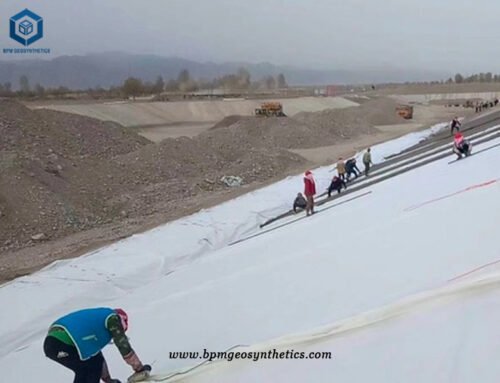Geomembrane and geotextile are the widely used geosynthetic products for civil engineering projects including waste containment, road construction, landfills, mining and energy industry. HDPE geomembrane liner is the ideal anti seepage lining material for aquaculture farm, water containment, waste containment and landfill projects. Geotextile fabric has the functions of filtration, drainage, separation, protection and reinforcement. Generally, the geotextile fabric can be categorized as woven geotextile and nonwoven geotextile. Among them, the nonwoven geotextile fabric is often used to protect the HDPE geomembrane liner from puncture and damage in the landfill projects. The PET nonwoven geotexitle is produced from polyester long fiber forming into net and consolidation with three dimension structure. It’s kind of new material in geotechnical and engineering project. Except for its good mechanical properties of tensile strength and puncture resistance, PET nonwoven geotextile also has good drainage ability, acid and alkali resistance and anti-aging properties. Since 2019, BPM Geosynthetics has provided 500,000 square meters of geomembrane and geotextile and 20 welding machines and other geosynthetic products for the landfill project in Indonesia.
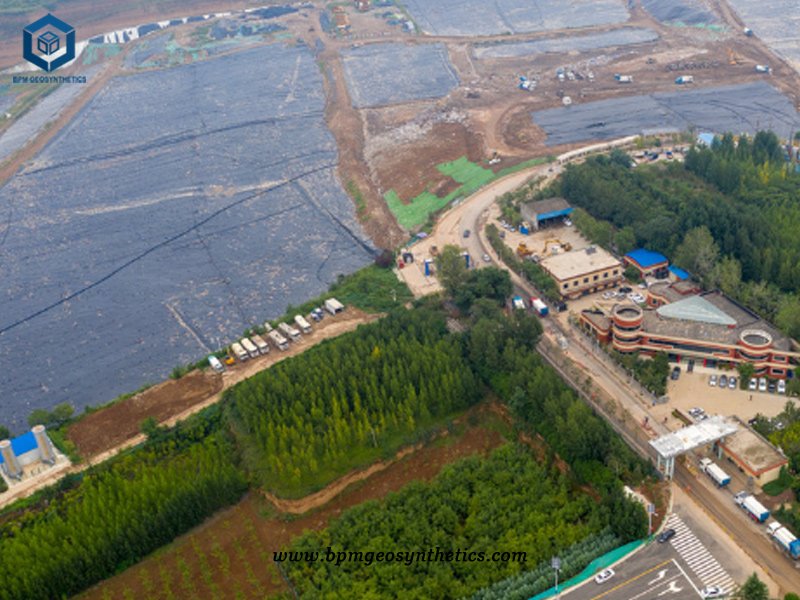
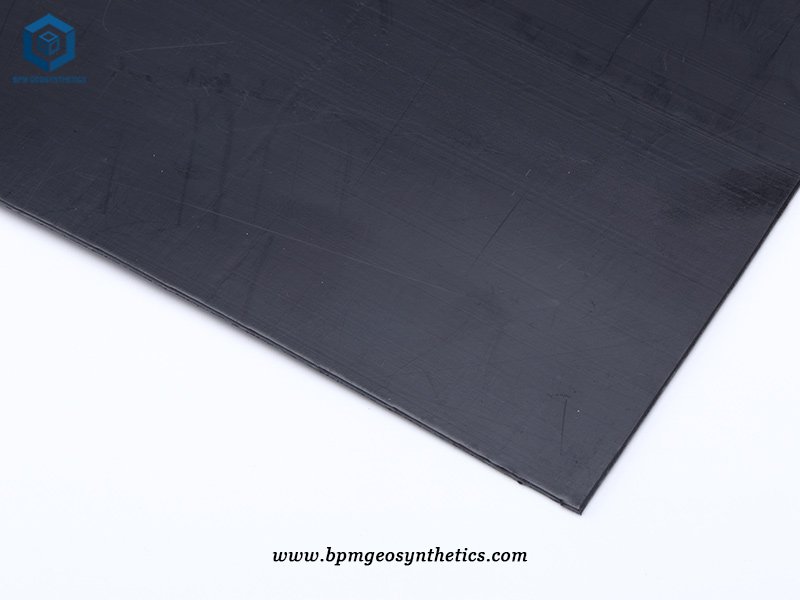
Indonesia is an island country in Southeast Asia with a pleasant climate. In order to prevent waste from continuously polluting the environment, the Indonesian government has established landfills to rationally plan the environment. With the continuous improvement of living standards, urban domestic garbage continues to increase. In order to prevent garbage from polluting the environment, garbage must be treated. For a long time, most of the domestic waste treatment is simple landfill, and the composition of the waste is very complicated. After the landfill, the leachate produced is the most complicated and difficult to treat sewage after the reaction of hypoxia and fermentation. A garbage dump that has not been harmlessly treated has become a long-term source of pollution, seriously polluting groundwater. Harmful gases produced by garbage are directly discharged, polluting the air and seriously affecting the surrounding environment. The biogas generated in the garbage has not been drained and moved horizontally. When the concentration reaches 5-15%, the garbage causes explosion and self-incineration. This phenomenon has occurred in many landfills. The Indonesian government is paying more and more attention to environmental protection, so it has built a large landfill to solve the current problems.
With the advancement of environmental protection projects, landfills everywhere choose geomembrane and geotextile as an anti-seepage material, so what advantage does geomembrane play in the landfill?
- Reduce the infiltration of rainwater and other external water into the garbage dump body to achieve the purpose of reducing garbage leachate;
- Control the odor emission of the landfill site and the organized release and collection of combustible gas from the upper part of the landfill site to achieve the purpose of pollution control and comprehensive utilization;
- Inhibit the reproduction and spread of pathogenic bacteria and their disseminators, mosquitoes and flies;
- Prevent surface runoff from being polluted, and avoid the spread of garbage and its direct contact with people and animals;
- Prevent soil erosion;
- Promote the stabilization of the garbage dump as soon as possible;
- Provide a surface that can be landscaped, provide soil for the growth of vegetation, and facilitate the reuse of landfilled land.
In short, HDPE geomembrana liner is absolutely necessary base material for Landfill project.
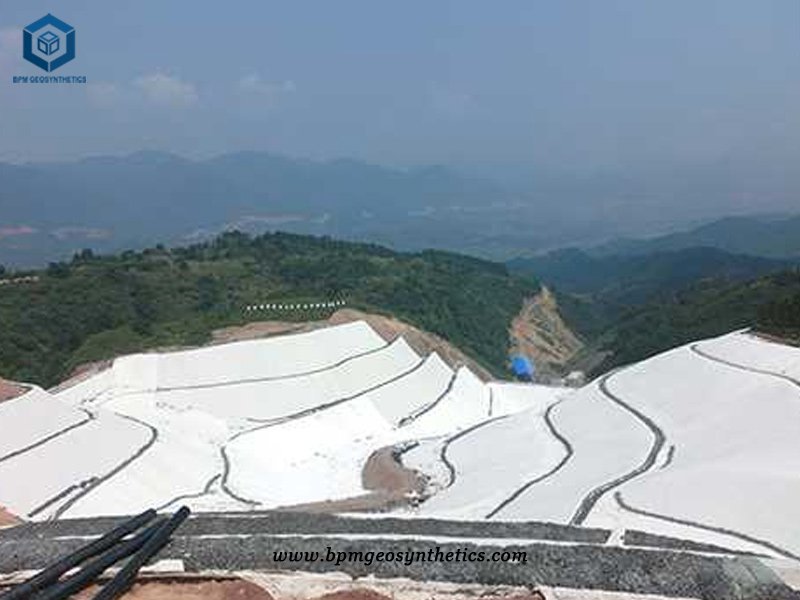
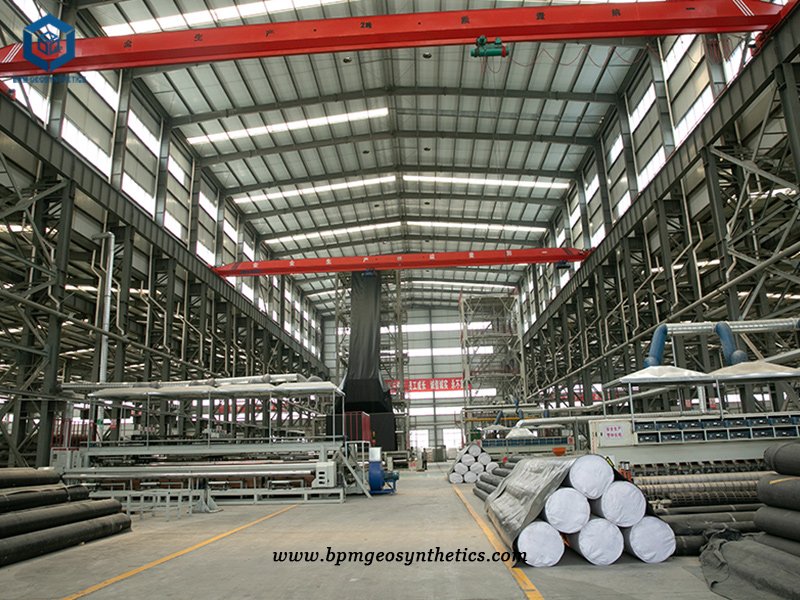
PET non woven geotextile is mainly used to protect geomembrane from puncture in landfill. The bottom layers of the HDPE geomembrane liner can be covered with PET Geotextile, or you can directly choose a composite geomembrane formed by the combination of geomembrane and geotextile. The PET geotextile is covered under the geomembrane to prevent impurities, gravel, branches on the ground from piercing the geomembrane. The PET geotextile covers the HDPE geomembrane liner to prevent the spikes in the garbage from damaging the geomembrane. In the landfill site, it is necessary to know that the geomembrane is the main body. To have a good anti-seepage effect, the geomembrane must be protected so that the geomembrane must not be damaged. Otherwise, the whole project will fall short.
In some landifll applications, Geosynthetics Clay Liner is sometime good choice. Bentonite is a natural inorganic material, does not undergo aging reaction, has good durability and is environmentally friendly. The construction is simple and is not restricted by the construction environment temperature, and it can also be constructed below 0°C. Only need to spread the GCL waterproof blanket on the ground during construction, and fix it with nails and washers during vertical or inclined construction, and lap it as required. It is self-healing and easy to repair; if the waterproof layer is damaged by accident, only a simple repair is needed on the damaged part; the cost performance is high, and the application is very wide. The product range can reach 6 meters, which greatly improves the construction efficiency.
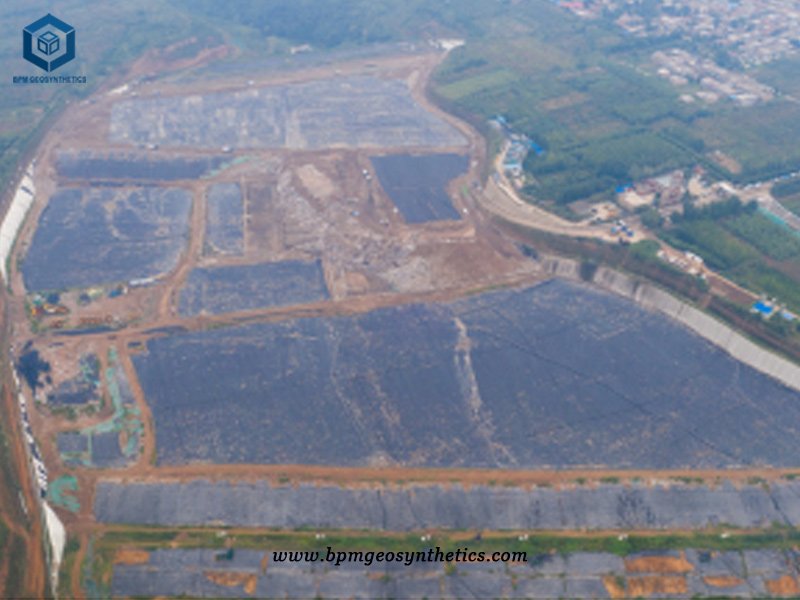
About BPM
BPM has been specializing in delivering one stop geosynthetics products and solutions to worldwide customers since its foundation in 2007. BPM had provided many types of effective and state of the art geomembranes, geotextiles, geocells, geosynthetic clay liners (GCLs), drainage boards, geogrids to over 81 countries. Our main customers are from Australia, France, Sweden, UK, Hong Kong, Hungary, New Zealand, Poland, Mexico, Ecuador, Brazil, Pakistan, Bangladesh, Thailand, Vietnam, Malaysia, Indonesia, Singapore, Philippines, Sri Lanka, India, UAE, Saudi Arabia, Qatar, Kenya, Ghana, Ethiopia, Somalia, Nigeria, South Africa, Swaziland, Mongolia etc.

